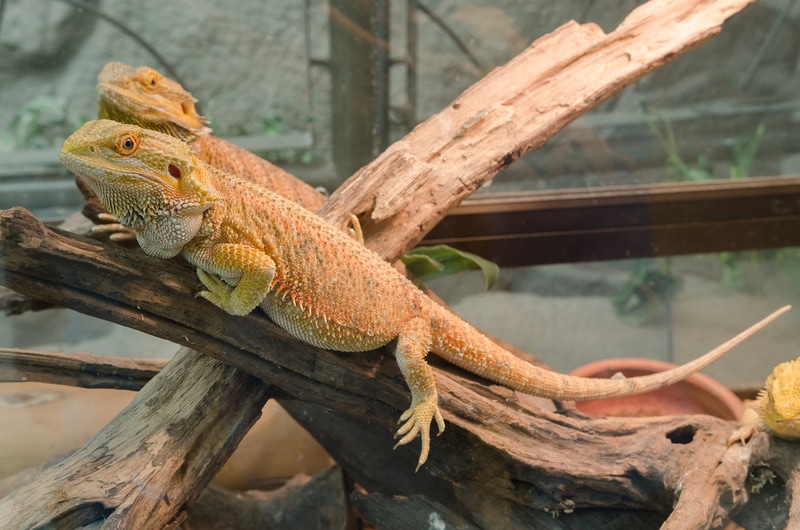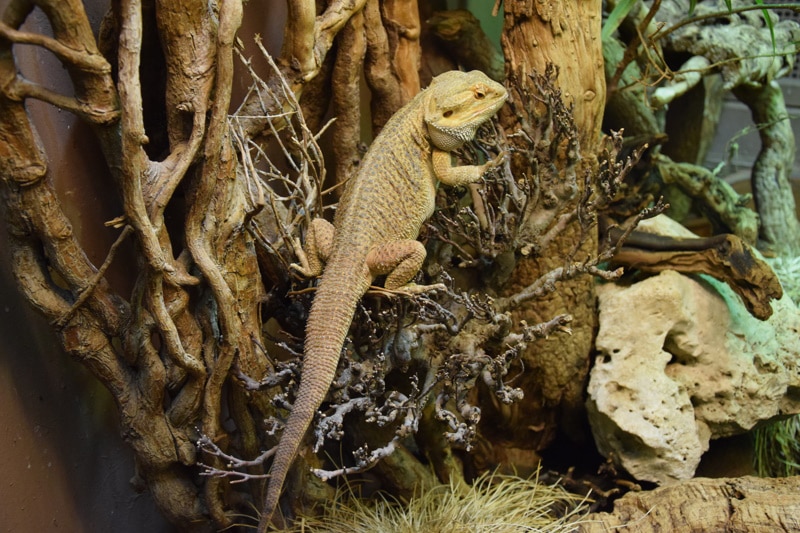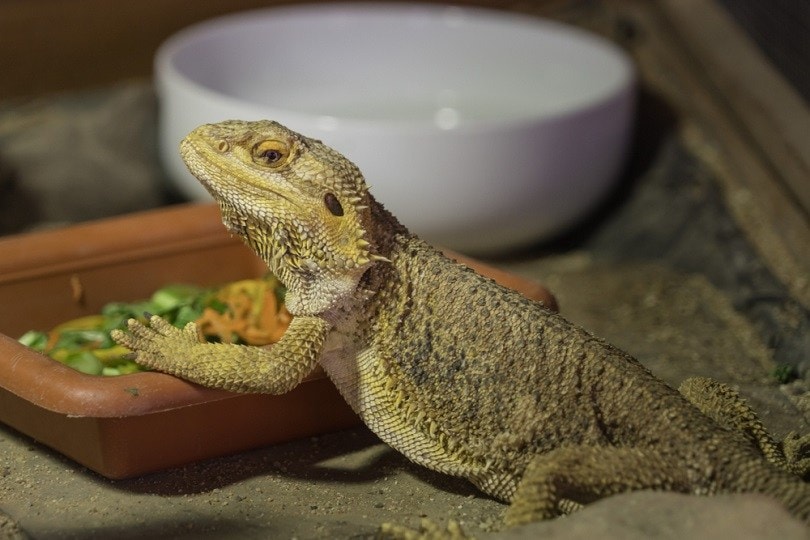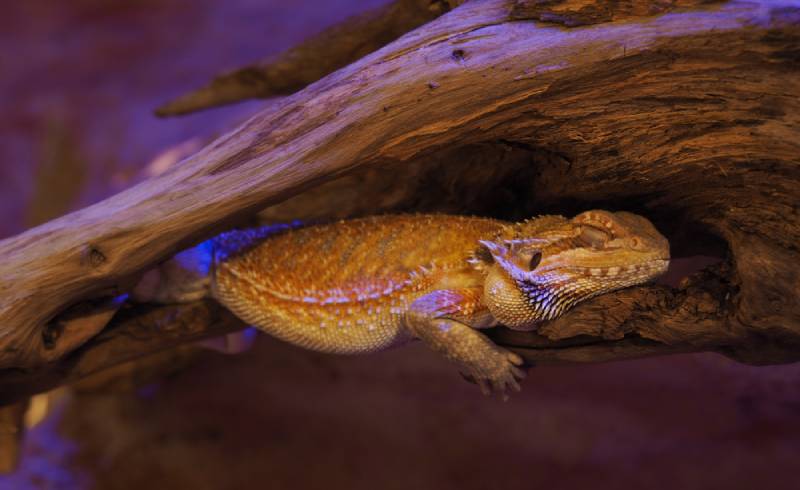How Big Do Bearded Dragons Get? Average Weight & Growth Chart

Updated on

Click to Skip Ahead
Bearded Dragons are one of the cutest and most popular pet reptiles, and they can get quite large. So if you’re interested in getting one as a pet or just need to upgrade to a larger enclosure, you may be wondering how big do Bearded Dragons get? This article will answer that question by looking at their average size and providing a growth chart so you can follow your dragon’s progress over time. For now, we will tell you, that at their largest, bearded dragons can grow up to 14–24 inches and 12–18 ounces of weight.
Bearded Dragons Breed Overview
Bearded Dragons come in two main breeds: the Central Bearded Dragon (Pogona vitticeps) and Eastern Bearded Dragon (Pogona barbata). Both of these subspecies grow to slightly different sizes.
Central Bearded Dragons have a more rounded body shape and tend to be larger than their eastern counterparts. They can reach up to 24 inches long, with an average adult size of 18–20 inches. On the other hand, Eastern Bearded Dragons are typically smaller, growing to 14–18 inches in length as adults.

Bearded Dragons Size & Growth Chart
The growth rate of your dragon will depend on its breed, age, health and diet. With this in mind, here’s a chart that shows how big bearded dragons get over time.
| Age | Size | Weight |
| Hatchling (0–2 months) | 2–3 inches | 2 ounces |
| Juvenile (2–6 months) | 5–7 inches | 4 ounces |
| Subadult (6–12 months) | 11–12 inches | 10 ounces |
| Adult (1+ years) | 14–24 inches | 12–18 ounces |
When Does a Bearded Dragon Stop Growing?
Most Bearded Dragons stop growing when they are around 12–18 months old. This when they are considered to be an adult. However, some Bearded Dragons may continue growing up until they are 24 months old.

The 3 Factors Affecting the Size & Weight of Bearded Dragons
There are several factors that can influence the size and weight of a Bearded Dragon, including their diet, age, health, and living conditions.
1. Diet
Start by providing your dragon with a balanced diet that includes insects, vegetables, fruits, and other proteins like mealworms or crickets. This will ensure they have all the necessary nutrients to develop properly into adulthood.
2. Health
Health can also play a role in the size and weight of your dragon. Be sure to monitor their health by providing them with regular veterinary checkups, deworming treatments, and good hygiene practices like changing out their substrate or bedding regularly.

3. Living Conditions
Finally, make sure that your dragon is living in an appropriate habitat for its size and age. If they are kept in an environment that is too small, they may not grow to their full potential size.
Ideal Diet for Maintaining a Healthy Weight
The ideal diet for your Bearded Dragon for maintaining a healthy weight should include plants and insects. Most adult Bearded Dragons should consume around 20% insects and 80% fruits and vegetables. However, most commercial Bearded Dragon food will contact the nutrients that your dragon needs, provided that you feed the proper amounts. You can also provide fresh fruits and vegetables to your dragon as an occasional snack.
If your Bearded Dragon is overweight, they will have a larger midsection and look “heavy” compared to other dragons of the same size. Conversely, if your dragon is underweight, they may appear thin or malnourished. To get an accurate assessment of their weight and dietary needs, it’s best to bring them to a veterinarian for a thorough checkup.

How to Measure Your Bearded Dragon
It’s pretty easy to measure a Bearded Dragon. You can easily measure their length from nose to tail with a measuring tape and you can simply place them on a scale to get their weight. But if you’re not comfortable with this, a vet can always give you a more accurate measurement.
Conclusion
Bearded Dragons come in many sizes and shapes, with some reaching over a foot long! It’s important to understand the basics of their growth so that you can provide them with the best care possible. A balanced diet, proper veterinary care, and environmental enrichment are all key factors in ensuring your dragon grows to its full size. With these tips, you’ll be sure to have a happy and healthy Bearded Dragon!
Featured Image Credit: Mr. Ratchacrit Nakkhonok, Shutterstock










